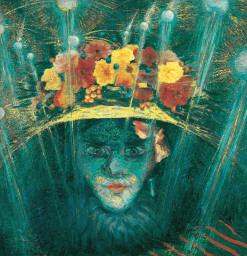Milan's celebrations of Futurism's 100th birthday are gathering pace, with two exhibitions already open and other shows and events planned for coming months.
Futurism was officially launched with the publication of a manifesto by Filippo Tommaso Emilio Marinetti in 1909, published in a local Italian paper on February 5 before appearing in French daily Le Figaro on February 20.
Milan's sweeping exhibition 'Futurismo 1909-2009 - Velocita' + Arte + Azione' at Palazzo Reale is the largest ever devoted to Futurism, with 500 pieces from around the world.
Spread across 30 rooms, the exhibition explores the entire story of the avant-garde movement from its roots in the end of the 19th century through its creation, rise and eventual fall.
Although best known for its artwork, Futurism also encompassed theatre set design and costumes, photography and architecture, all of which are covered in the show.
The exhibition starts with a section on Lombard art in the late 1800s, specifically the Symbolist and Divisionist movements, with pieces by Medardo Rosso, Giovanni Segantini and Giuseppe Pellizza da Volpedo.
It then features a section of documents and background exploring the life and works of Futurism's founder, Marinetti, followed by rooms devoted to each of his manifesto's co-signatories: Umberto Boccioni, Carlo Carra', Luigi Russolo, Giacomo Balla and Gino Severini.
These five artists all became leading lights in the movement, and this section of the show features pivotal Futurist works.
On display are Boccioni's 'Unique Forms of Continuity in Space', Balla's 'Abstract Speed: The Car Has Passed' and Carra's 'Red Rider', among others.
The exhibition also looks at offshoots of Futurism, such as Aeropittura, which translated the movement's passion for machinery and speed into flight and aerial velocity.
It closes with a section on later art inspired by the movement, with a particular emphasis on Italian greats such as Lucio Fontana, Alberto Burri and Mario Schifani.
The exhibition will close in June but Milan will continue celebrating throughout the year, with over 100 events planned.
Marking the second significant date for the Futurism manifesto, a show focusing solely on Marinetti opened in the Stelline Foundation on February 20.
Running until June 7, the show features bookplates, documents, posters and original photographs exploring the life and ideas of the writer and editor.
A third exhibition will open in October, contrasting the work of Italian artists with that of Expressionist, Cubist, Dadaist and Constructivist pieces from across Europe.
In particular, it will pay homage to Umberto Boccioni, while also looking at Futurism's most intense period through the work of Carlo Carra' and Luigi Russolo.
Marinetti's manifesto expressed the Futurists' key ideas - a love of machinery, industry and speed - which were later embodied in the rampant colours and violent energy of the artists, extolling the merits of a new, technologically advanced age.
Art historians have long recognised the part played by Futurism in shaking up the sleepy turn-of-the-century art world, according them an honoured place between the Impressionists and the Cubists.




